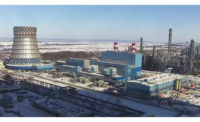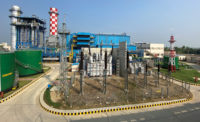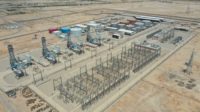Panda Power Funds, capitalizing on the need for highly efficient generating capacity in two key electricity markets, is building and planning more new natural-gas-fired combined-cycle units than anyone else in the U.S. right now. Working with some of the nation's top engineering-procurement-construction contractors in the energy arena, Panda, a Dallas-based private equity firm and independent power developer, is building three 758-MW plants to serve the Electric Reliability Council of Texas region and undertaking four projects, totaling 3,267 MW, in the PJM Interconnection region—two of them already under construction in Pennsylvania and one each in Maryland and Virginia in advanced stages of planning.
 |
"The challenge is, how do we deal with going from no projects in construction a couple of years ago to having five now and more just around the corner," says Richard Evans, Panda's senior vice president of engineering and construction. Panda "took a hybrid approach. First, we staffed up," he notes, building on what Evans calls "a core team that recognizes where the risks are" in undertaking projects valued at several hundred million dollars each.
Panda also hired owner's engineers well versed in powerplant design and construction. Sargent & Lundy is working with Panda on the three ERCOT-Texas projects, and Worley Parsons is working with the developer on the two 829-MW combined-cycle plants being built in Pennsylvania.
"One thing we are always preaching at Panda is that we are risk managers first," says Evans. From a risk-mitigation perspective, he says two of Panda's most important actions were hiring the right engineering-procurement-construction contractors and establishing open, trusting relationships with them. "If we do a good job in selecting the EPCs, we're off to a very good start," he notes.
Bechtel Power is the EPC for three combined-cycle units now under construction in ERCOT; in addition to Temple I and Panda, Bechtel is designing and building Temple II, which will come on line in summer 2015.
In Pennsylvania, a joint venture of Gemma Power Systems and Lane Construction Corp. is serving as the EPC for two 829-MW plants: the Liberty project in Towanda and the Patriot project in Williamsport. Liberty and Patriot—both near the heart of the Marcellus-shale natural-gas production region—will begin commercial operation in 2016.
Under consortium agreements with major equipment supplier Siemens at Temple and Sherman, Bechtel is "responsible for project management, engineering, procurement, construction and commissioning" of the units, according to Bechtel, and Siemens is providing "the power-island package, including the natural gas and steam turbines and waste-heat recovery boilers."
Each of Panda's three new units in Texas will be a Siemen's Flex-Plant, which is designed to allow rapid "ramp up" of electric output, a feature particularly useful in ERCOT, which has more than 10,000 MW of wind-turbine capacity whose variable output must be regularly balanced by gas-fired units.
Panda acquired the Liberty and Patriot projects in Pennsylvania from another developer, Moxie Energy, and the major contracts already were in place, so the Gemma-Lane joint venture and Siemens have contractual arrangements at Liberty and Patriot aimed at mimicking a consortium.







Post a comment to this article
Report Abusive Comment